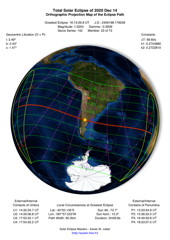
Eclipse circumstances
|

Average cloudiness in December along the path of totality
(courtesy of Jay Anderson)
|
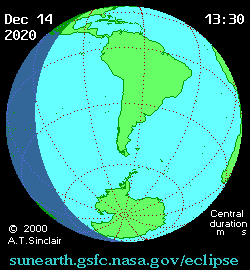
Eclipse animation
|
The average cloudiness statistics show that Argentina is clearer than Chile, which isn’t surprising as the prevailing winds come from the west and dump most of the moisture on the Chilean Andes. It’s cut and dry when looking at the ground vegetation and/or satellite imagery.

Average cloudiness along the centerline in December
(courtesy of Jay Anderson)
|
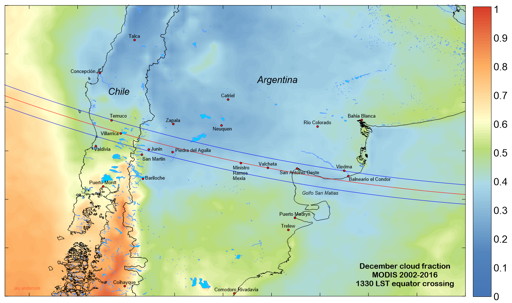
Average cloudiness in December
(courtesy of Jay Anderson)
|
Now if we have a look at the past cloud cover on eclipse day from the years 2012 to 2019, we can see the eclipse path has been quite cloudy! Usually the cloud cover in Argentina is lower and thinner although in 2014 there were huge thunderstorms which explain what we see.
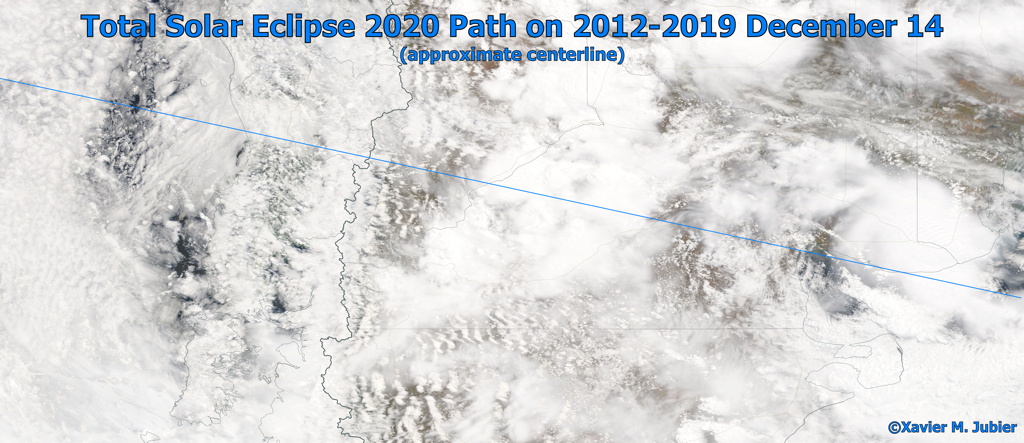
Stacked cloud cover on December 14 from 2012 to 2019
Finally the cloud cover during a week around eclipse day from December 11th to 18th, 2019. The sweet spot appears to be in the middle of Argentina.
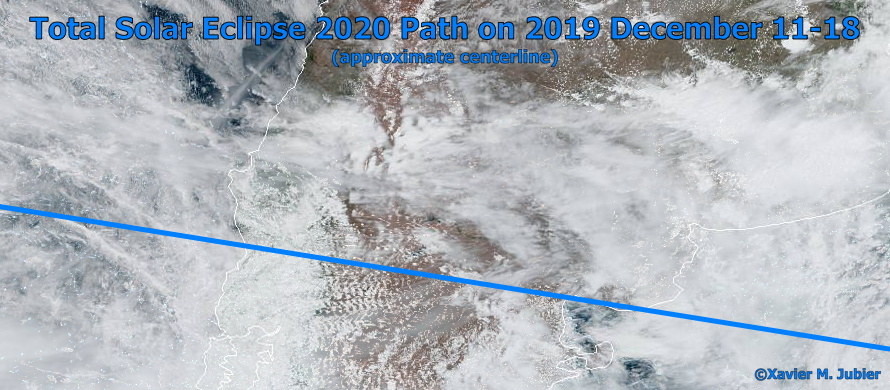
Stacked cloud cover from 11 to 18 December 2019
|
In short, the best weather prospects are either in the middle of Argentina or else near the Pacific and Atlantic seashores, and this is what I could personally witness over the years while on the ground. The area from Villarrica to Pucón is often cloudier than the rest of the eclipse path, and it does match perfectly the long term statistics.
In December 2018 I scouted once more the whole eclipse path from the Pacific Ocean in Chile to the Atlantic Ocean in Argentina. Overall the sky was mostly clear in Argentina, although extremely windy close to the Andes, and mostly cloudy in Chile where a system was blocked by the Andes during three rainy days.
From the satellite imagery at this latitude it’s clear that the Chilean side is greener and on the ground it’s what you’ll notice, lots of vegetation and trees, whereas the Argentinean side is barren and drier with little vegetation and trees.
Weather-wise and mobility-wise I recommend Argentina for this eclipse.
180-degree panorama from Pucón and lake Villarrica in Chile in December 2018 (it was cloudy three days in a row and raining)
|

Mamuil Malal border crossing on the Chilean side (the cloud cover was breaking)
|

Mamuil Malal border crossing on the Argentinean side (the cloud cover was breaking but it was raining)
|
Viewing the eclipse from the summit of the Lanin volcano is enticing. Moreover during the early morning hours before completing the ascent, climbers looking towards the northern horizon can be rewarded by the peak of the Geminids meteor shower.
180-degree panorama of lake Quillén and the Lanin volcano in Argentina (December 2018)
|
180-degree panorama of the Catán Lil river in Argentina (December 2018)
|
180-degree panorama in Patagonia in December 2018
|

Via Christi and The Eye of God in Junín de los Andes, Argentina (one could have an "interesting" view)
|
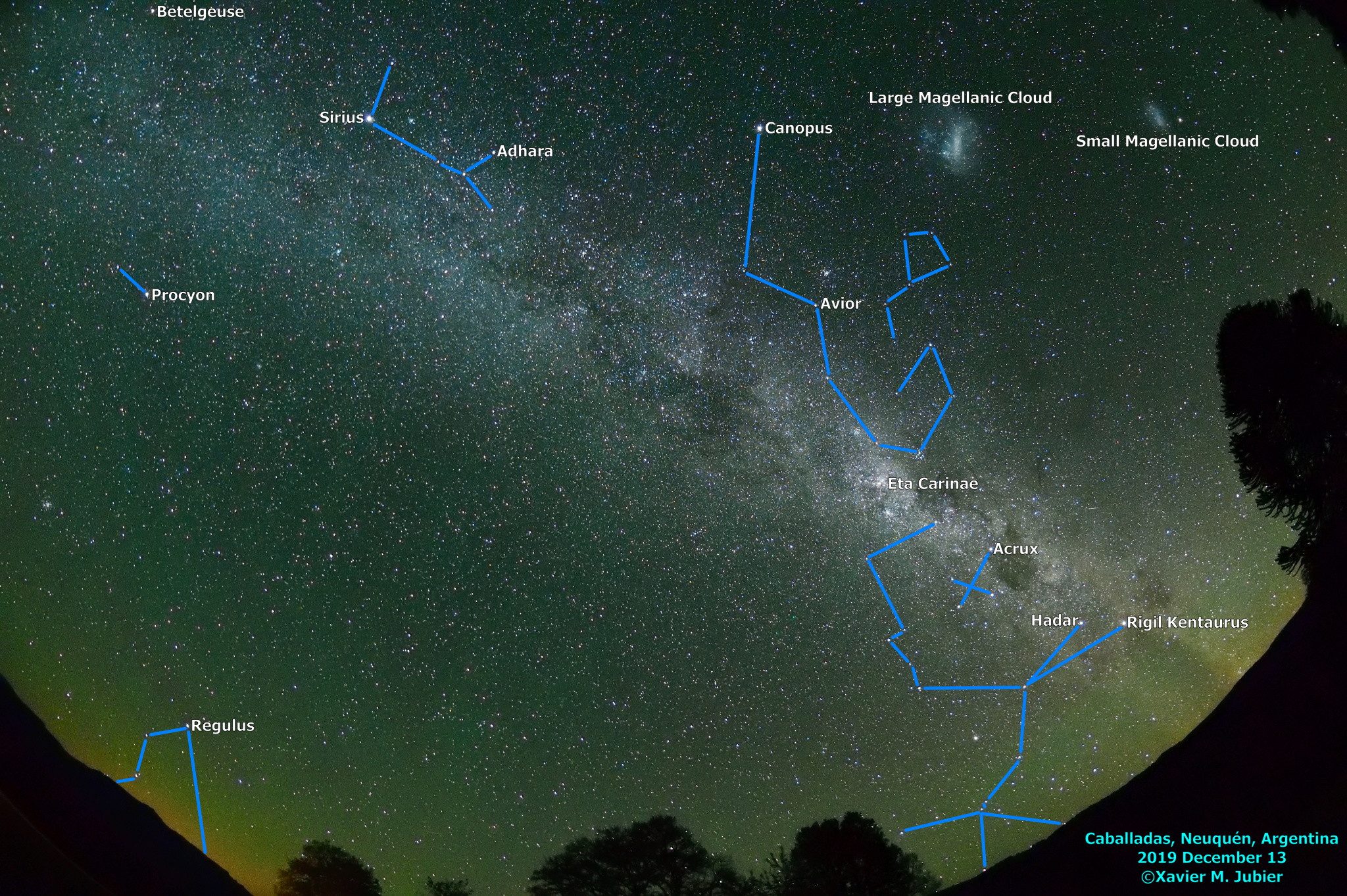
Starry night sky from Caballadas, Neuquén, Argentina on 2018 December 13th
(with some annotations; picture without any post-processing)
|
Those attending the IAU Symposium 367 in San Carlos de Bariloche will have the option to observe the eclipse from a location close to Piedra del Águila (to be announced at a later time).
180-degree panorama of Piedra del Águila on 2018 December 14th
180-degree panorama of Piedra del Águila (backside) on 2018 December 14th

The area around Piedra del Águila is famous for fly fishing
|
180-degree panorama from a hilltop on the centerline on 2018 December 14th
|

Moon above the mast located on the centerline, Argentina (totality will be even higher in the sky) in December 2018
|

Sierra Colorada, Argentina (December 2018)
|

Ministro Ramos Mexia, Argentina (December 2018)
|
180-degree panorama from the centerline between Ministro Ramos Mexia and Valcheta in December 2018
|

Valcheta, Argentina (December 2018)

Tourism office in Valcheta, Argentina (December 2018)
|

Atlantic Ocean in Las Grutas, Argentina (December 2018)
|
Covid-19 Update: at the beginning of October things didn’t look good for foreigners looking to travel to Chile and Argentina; early November we will likely know for sure and this is why plan B needs to be ready.

Travel restrictions map as of October 19, 2020…
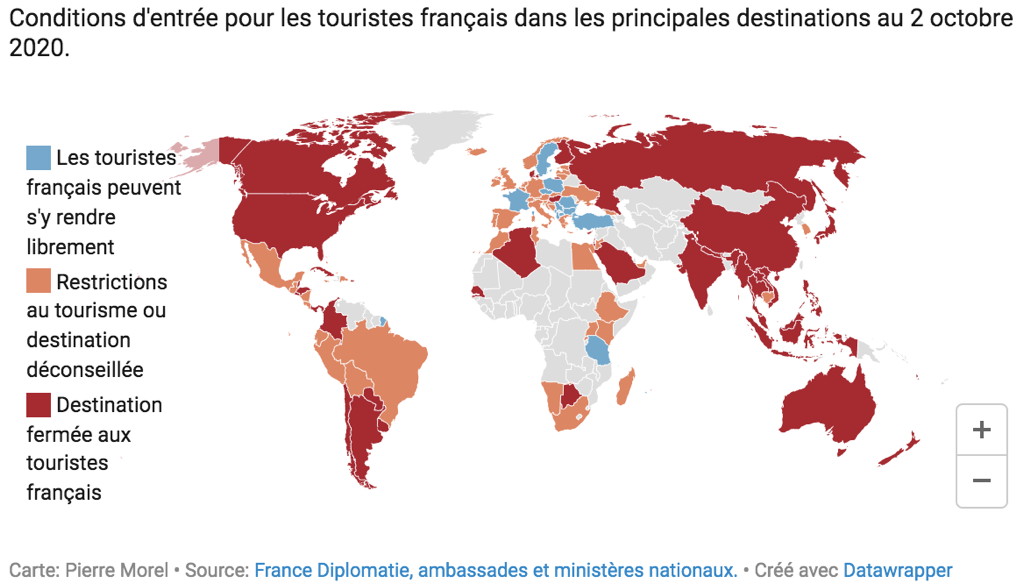
Where to travel to for French tourists as of October 2, 2020…
Here is what can happen when we’re desperate and need to be inventive (thanks to Bill Kramer ;-))!

French sailboat on its way to the Argentina seashores for observing the eclipse at sea…
In Chile they have implemented a Covid-19 selective opening by using a system of five stages. From November 23rd foreigners should be able to again enter Chile solely airborne to Santiago de Chile all the while following a strict sanitary protocol. Having a negative 72-hour old PCR test and installing a tracing app will be mandatory. Travel within the country will be subject to the stages system and having a sanitary passport.
Argentina is also supposed to be opening around December 1st with similar constraints.


Five stages of the "Paso a Paso"

Following the stages on Twitter is possible, here we see Temuco goes back in quarantine
You can check the status of a city by typing its name or else use the Twitter feed.
As of November 16th this is the situation inside the eclipse path in Chile.

Map of the situation in Chile on November 16th (click on the map to visualize the current situation)
|
Last here are the recent and future solar eclipses over Chile and Argentina.

Three total solar eclipses over South America in 10 years

Three total solar eclipses and one annular over South America in 10 years

Three annular solar eclipses over South America in 10 years
|





































